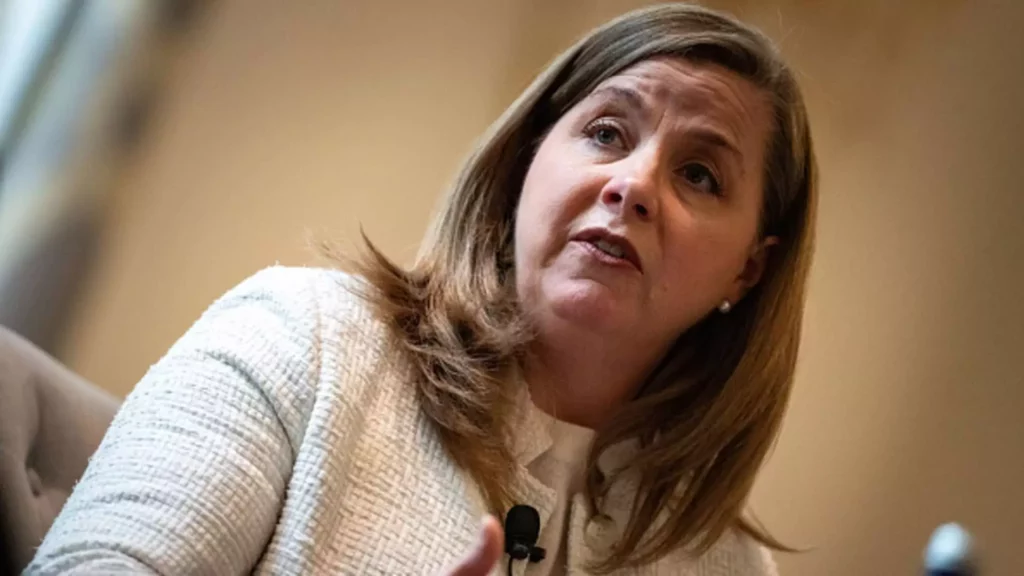In recent discussions surrounding monetary policy, Federal Reserve Governor Michelle Bowman has firmly positioned herself in support of the recent quarter percentage point interest rate cuts. However, she has articulated a clear boundary: no further cuts are necessary. Her views, expressed during a recent address to bankers in California, reflect her belief that while adjustments were essential, the prevailing economic climate primarily indicates a “neutral” stance—a rate that neither propels nor throttles economic growth.
Bowman’s assertion, grounded in her analysis of inflation dynamics, is particularly noteworthy as she points out that current inflation levels remain “uncomfortably above” the Fed’s long-term target of 2%. The governor perceives this inflationary pressure as a significant factor meriting caution in future policy decisions. Specifically, she regards the December action as a conclusive step in the recalibration of policy rather than an ongoing trend.
The current economic landscape portrayed by Bowman’s comments highlights underlying complexities in measuring inflation. While the Federal Reserve’s preferred inflation metric clocked in at 2.4% in November, a more concerning figure emerges from core inflation—which excludes volatile sectors such as food and energy—standing at 2.8%. This reality underscores the difficulties central bankers face in forecasting inflation trends with any degree of certainty. Bowman’s acknowledgment that core inflation remains persistently above the target presents an urgent call for vigilance, especially as expectations remain that it might not align with the target for several years, potentially stretching into 2027.
Her remarks don’t exist in a vacuum; they resonate with broader discussions among Federal Open Market Committee (FOMC) members who share a cautious outlook on inflation. This sentiment manifests a shared recognition of the need to balance risk with proactive measures, as declining inflation rates throughout 2023 appear to have plateaued.
Bowman’s perspective does not find unanimous support among her peers. For instance, Governor Christopher Waller recently conveyed a more bullish take on the inflation outlook, suggesting that while averaged inflation data may remain elevated, actual pricing trends are displaying moderation. His optimism indicates a likelihood of further reductions in the main policy rate, suggesting a fundamental divergence in the committee’s viewpoints.
Furthermore, regional presidents like Susan Collins and Patrick Harker have also expressed optimism about the potential for rate cuts later this year, albeit at a more measured pace than previously anticipated. This interplay of perspectives within the Federal Reserve magnifies the complexity of formulating a cohesive strategy, particularly when members might endorse differing approaches based on their inflationary outlooks.
One significant aspect of Bowman’s address touched on the notion of maintaining balance in monetary policy. She expressed concerns about loosening the policy framework excessively, especially in light of robust stock market performance and climbing Treasury yields—indicators that typically signal that interest rates have an essential dampening effect on economic activity and inflation.
In this light, her preference for a “cautious and gradual approach” to policy adjustments underscores a responsible mindset amidst uncertain economic conditions. Such a strategy aims to navigate the choppy waters of economic growth while ensuring that inflation does not derail progress.
As an influential member of the FOMC and a potential front-runner for the vice chair of supervision role, Bowman’s observations extend beyond just monetary policy initiatives. Her caution regarding external factors such as trade tariffs and immigration policies under the incoming administration emphasizes the interconnectedness of economic policies and their potential ramifications. Recognizing that impending government actions could influence economic stability reflects a nuanced understanding of the complexities at play.
Michelle Bowman’s insights reveal a careful balancing act between maintaining economic growth and controlling inflation. With varied perspectives among Federal Reserve members, the dialogue continues to evolve as officials navigate the uncertain terrain of monetary policy in a fluctuating economic landscape.

